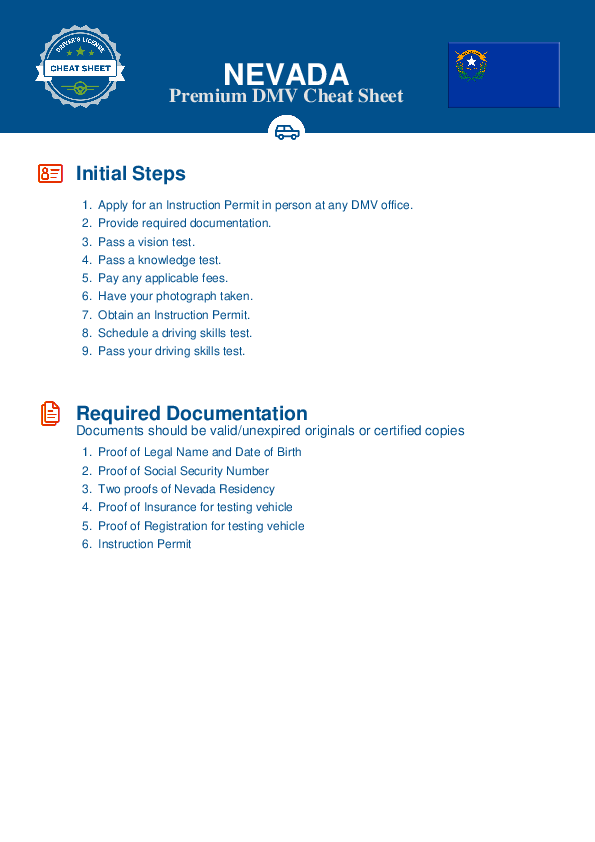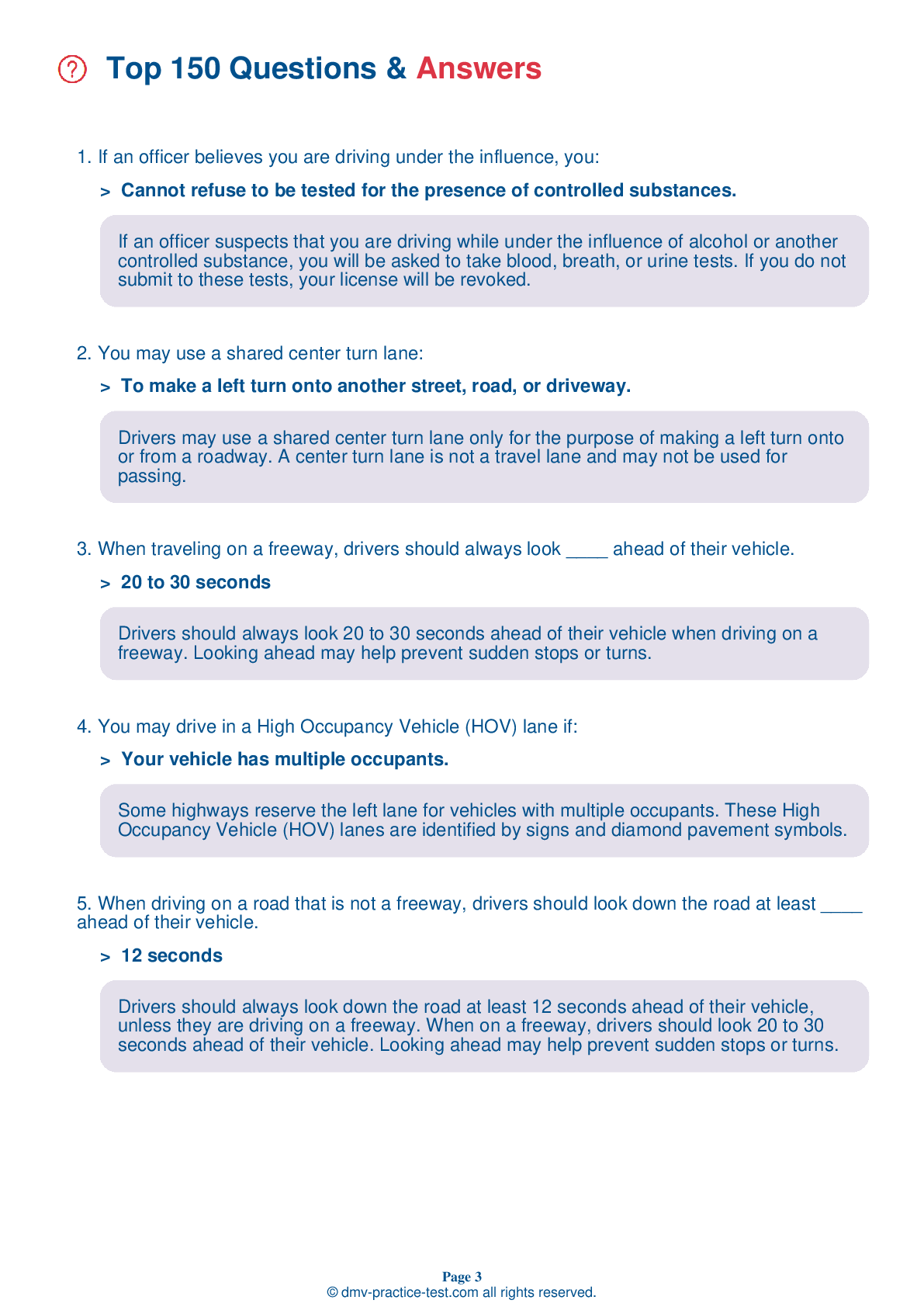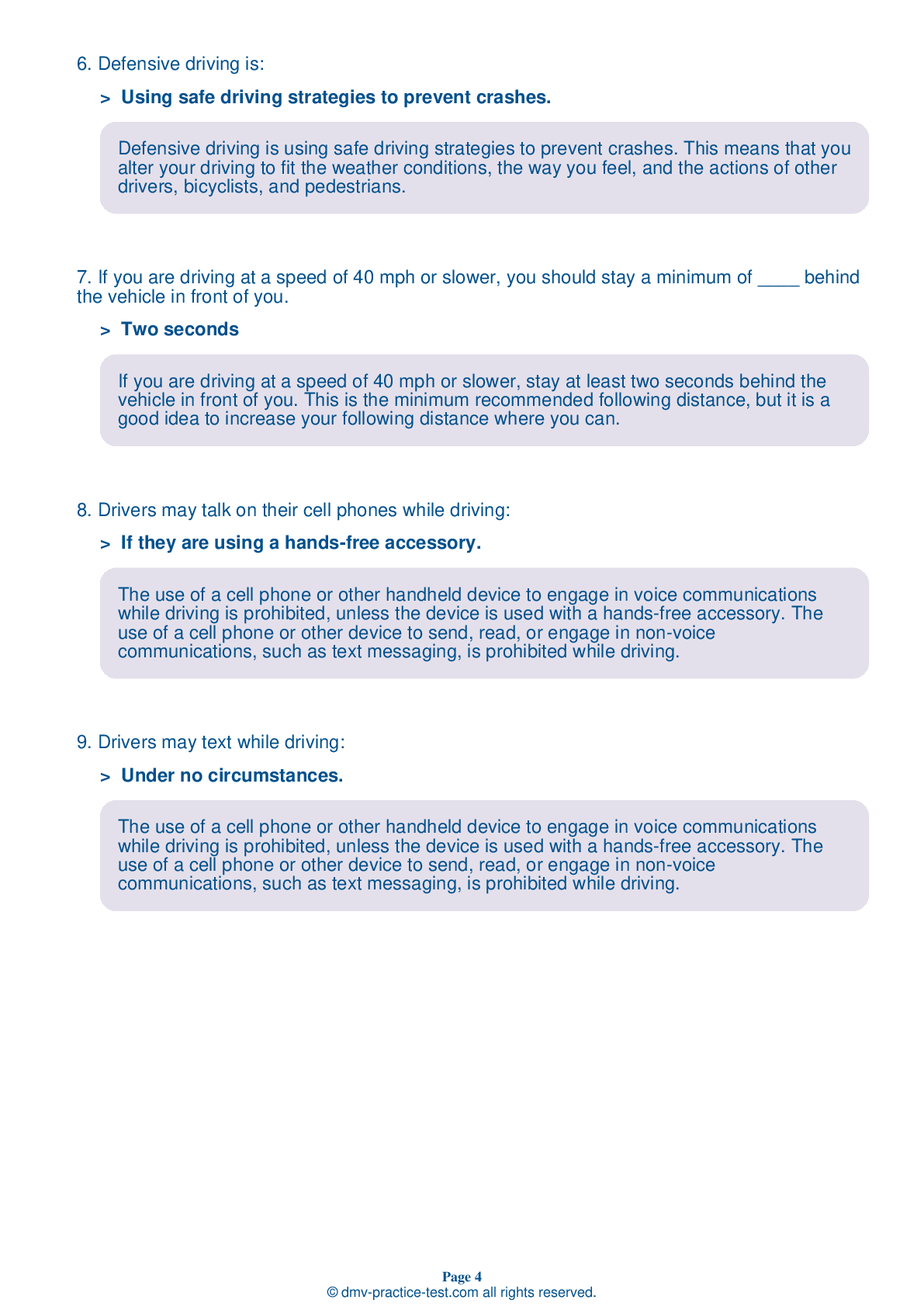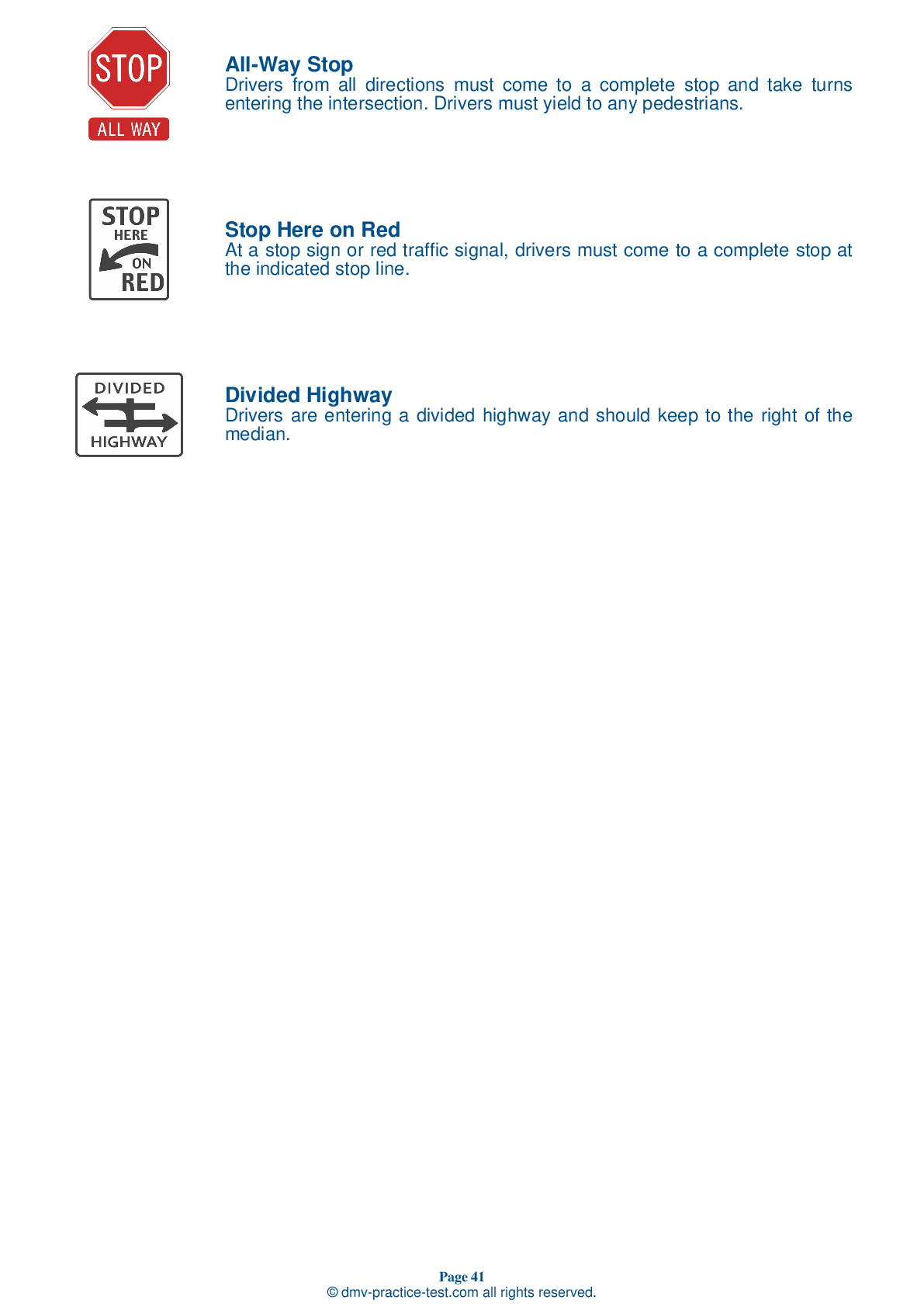FREE Nevada DMV Practice Test #19 Page 4 of 7
The Nevada DMV practise examinations have been updated for January 2025. It includes questions based on the Nevada Driver Handbook's most significant traffic signals and legislation for 2025. Use actual questions that are very similar (often identical!) to the DMV driving permit test and driver's licence exam to study for the DMV driving permit test and driver's licence exam.
On the practise exam, each question gets a tip and explanation to help you remember the concepts. The written component of the official Nevada DMV test will include questions about traffic rules, traffic signs, and driving statutes, as well as knowledge from the Driver Handbook.
To obtain a passing grade, you must correctly answer 40 of the 50 questions. To help you prepare for your instruction permit or driver's licence, take our Nevada DMV practise test.
The DMV exam is available in several languages.
Using any kind of testing assistance will result in an automatic fail, and the DMV may take additional action against your driver's licence, so stay away from it.
22 . When passing a large vehicle, the driver of a small vehicle must be prepared for:
Large vehicles can cause wind gusts with a force great enough to cause direction changes in smaller vehicles. Drivers of small vehicles should be prepared to take proper corrective steering action when approaching or passing large vehicles that are moving at or near maximum speeds.
23 . A speed restriction sign:
Curve and turn warning signs often have attached advisory speed signs that show a recommended driving speed for drivers in the curves and turns. Although a driver may feel comfortable driving at a higher speed in fair weather, they should never do so under rainy, snowy, or icy conditions.
24 . You are driving on a narrow road when you meet an oncoming vehicle. You must:
On narrow roads, you must allow vehicles traveling in the opposite direction at least one-half of the main-traveled portion of the road. Both vehicles must have adequate space in order for the drivers to safely pass one another.
25 . Stress can affect your driving by:
Emotions can have a great effect on your driving ability. You may not be able to drive well if you are overly worried, excited, afraid, angry, or sad. Stress can lessen your concentration on the task of driving. It is better to wait to drive than to risk driving while you are emotionally unstable.
26 . A pedestrian starts to cross in front of your vehicle. You should:
Slow down and be prepared to stop whenever you see pedestrians walking on or crossing the roadway. Be particularly careful where children are present. Always yield the right-of-way to a pedestrian crossing in a crosswalk.
27 . If a vehicle starts to skid on water, the driver should quickly apply the brakes.
If a vehicle skids while hydroplaning, the driver should try to regain control of the vehicle. If that is not possible, the driver should release the accelerator and ride out the skid. The driver should not immediately apply the brakes.
28 . To ensure that your physical condition does not cause you to drive in an unsafe manner, you should:
Your physical condition has an important bearing on your ability to drive safely. Drivers should be aware of their physical limitations and only drive if it is safe to do so.
Need Car Insurance? No problem!
Compare the best rates in Nevada and find a personalized policy that meets your needs.
1. Are You Currently insured ?
2. Married ?
3. Do you own your Home?
4. Do you have more than 1 car ?
5. Have you or a Family Member Honorably Served in U.S. Military ?
6. Your Name
7. Age
8. Zip code
IMPORTANT REMINDER:Auto Insurance is Mandatory to drive in Nevada. Get covered before you hit the road to avoid any fines.
Ranked by best match



